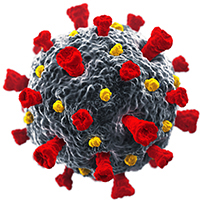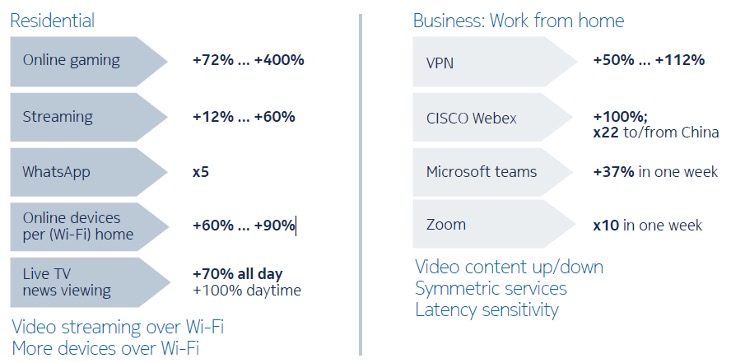How COVID-19 Has Changed the Broadband Industry

Broadband connectivity has played a vital role during the COVID-19 pandemic, way beyond keeping bored households entertained through lockdowns. For many of us, broadband has helped keep us connected, employed, fed and educated, not to mention sane. For businesses and governments, it has ensured some level of economic activity and helped to inform and protect citizens.
Broadband service providers and network operators have seen enforced lockdowns during the pandemic create a seismic shift in online behavior. Independent network traffic sources like Ookla, operators like AT&T, and equipment vendors like Nokia have all reported spikes in broadband demand of anywhere between 30 and 60 percent. Online gaming, video streaming, VPN usage, and video collaboration platforms like Microsoft Teams, Zoom and Webex have all contributed. See Figure 1.

Figure 1: Increase in
bandwidth demand due to COVID-19 lockdowns, 1Q2020
(showing the range of increases published by various sources )
[click to enlarge]
Other significant consequences for broadband providers are that “off peak” all but disappeared (daytime traffic jumped 30-40 percent while evening and weekend traffic rose 10-15 percent); significantly more devices and households were connected simultaneously (playing havoc with the capacity planning assumption that only a few households are active at any given moment); and upstream bandwidth for video conferencing has suddenly become as important as downstream.
These increases, of course, only paint a partial picture as they come only from networks able to support increased traffic. A 4G or an ADSL connection offering up, say, 10 Mb/s will never deliver a massive spike in usage, which highlights the issue of minimum service levels. The same network data from Ookla et al also shows that fixed networks, rather than mobile, have borne the brunt of the traffic increase. This is not surprising: mobile as deployed today is mostly designed for people on the move, not in lockdown. In countries that rely heavily on mobile broadband, Ookla shows a noticeable degradation in both speed and latency during lockdowns. However, in countries where fixed networks are robust, that degradation of the mobile experience has been more moderate because many users opt to use Wi-Fi and fixed broadband instead of cellular connections on their mobile devices.
Broadband connectivity as infrastructure
Whether underserved or completely unconnected, households with reduced access to information, essential services, and connectivity to others have been both socially and economically vulnerable during this crisis. Flip that around to a more positive and achievable statement: the better broadband connectivity a country has, the better a government has been able to protect its citizens and protect its economy. Let’s look



















